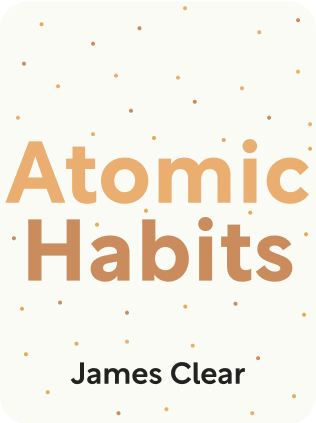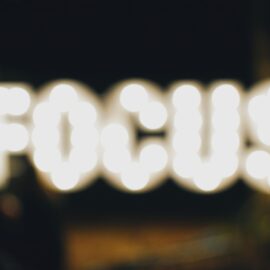

This article is an excerpt from the Shortform book guide to "Atomic Habits" by James Clear. Shortform has the world's best summaries and analyses of books you should be reading.
Like this article? Sign up for a free trial here .
Why is breaking bad habits so hard? What can you do to decondition yourself from ingrained behavior patterns that have accumulated over the years?
The process of breaking bad habits is really the process of changing who you are or becoming who you want to be. Your behaviors must match your sense of self for them to be lasting, but understanding who you are can be tricky and knowing which behaviors to change even trickier.
Keep reading to understand why breaking bad habits is so difficult, and what it really entails.
Breaking Bad Habits: The Layers of Change
There are three ways, or layers, in which we think about change. The direction in which we think about them makes all the difference in our success when it comes to breaking bad habits.
The outer layer consists of outcomes. Focusing on outcomes to prompt change is the most common approach. You have an end result in sight, so you adjust your behaviors to reach that goal.
The middle layer consists of processes. The behaviors involved in your system become the focus of your change. Most habits are associated with this layer.
The inner layer consists of your identity. This layer encompasses your opinions, beliefs, and assumptions about yourself and the world. Changes in behavior are motivated by the type of person you are or want to be.
Working from the outside in when striving to change behavior, or outcome-based habits (OBH), focuses your motivation on doing whatever it takes to reach a goal. But those behaviors may not be the most beneficial or capable of being repeated long-term. Further, once the goal is achieved, there is no reason to continue those specific behaviors. If you adapt your actions to serve one finite purpose, your actions also become finite.
- For example, you may decide you want to have six-pack abs. You decide that doing crunches will lead to that outcome. You do 100 crunches a day until you have six-pack abs. Now that you have the abs you want, 100 crunches start to seem like a burden, and you lose motivation to do them because they are not connected with a goal.
The problem with the OBH direction is that it removes the power of beliefs from the equation. Behind every system of behaviors is a set of beliefs. You focused on one action to create your desired outcome, not a system of behavior change that changed who you are as a person. You believe you are someone who can do 100 crunches, but beyond that, who are you? Are you a more fit person? A healthier person? If your behaviors don’t match the beliefs you feel inside, you will never be able to stick to them. That is where identity-based habits (IBH) come into play.
The IBH direction means working from the inside out when striving to change behavior. The focus becomes wanting to be a certain type of person, so you behave in a way that type of person likely behaves.
- Using the six-pack abs example, you determine that someone with six-pack abs must have a healthy lifestyle. Therefore, you desire to become someone with a healthy lifestyle. You decide that a combination of 10 crunches before bed, a low-calorie diet, and riding a bike instead of driving to work equals a healthy lifestyle. Over time, continuing to perform these actions leads to an overall healthier body that includes six-pack abs. Now, you have the abs you wanted and the habit of living more healthily.
One of the best motivators for breaking bad habits is when it gets you closer to the person you want to be. You become motivated not by “I want this result,” but by “I am this person.” You must be clear about who you are as much as about who you want to be. If you’re not sure who you are, look at your current habits and determine what beliefs support them.
There are two major aspects of IBH that support positive behavior change—identity evidence and the feedback loop.
Evidence of Identity and the Feedback Loop
Identity is not something you’re born with. Your experiences condition your beliefs about your identity. The more you act a certain way, the more you become conditioned to believe that’s who you are.
Think of it this way: every action you make is a vote for the type of person you are. As those votes begin to accumulate, you gain a larger picture of your actions and the associated identity. If your house is always messy, you will believe you are a messy person. Your actions become the evidence of your identity, and that can work for you or against you.
When the evidence suggests a positive view of yourself, you’ll be thrust forward toward positive behaviors.
- If you write one page a day for 30 days, the evidence suggests you are a writer. You will continue to write because that’s who you are.
When the evidence suggests you are someone with bad habits, you will have a hard time believing you are someone who can form good habits.
- If you only have two written pages after 30 days because you always watch TV, you will not believe you are a writer and will stop trying.
Breaking bad habits requires that you unlearn your long-held beliefs, despite the evidence, to open yourself up for change.
Identity change doesn’t happen overnight. It may take days or weeks for you to start believing you are a different person. But the more you cast votes for a particular identity through tiny habits, the more you will be motivated to keep casting votes, which will continue to strengthen your identity, and so forth. This is the feedback loop and one of the most significant aspects of habit formation.
- Put another way, the feedback loop signifies the following process: You want to be a certain type of person → that type of person acts in this way → the more you act in this way, the more you become that type of person → the more you feel like that type of person, the more you will act in the appropriate way. This feedback loop acts like a flywheel, gathering momentum as it keeps spinning.
The feedback loop occurs as your habits change to match your chosen identity. But if you behave in a manner opposite to your chosen identity, you will never become that person.
Two-Steps to Identity Change
You now know that habits represent who you are, but how do you become that person or make sure you are behaving in the right way?
First, you must decide who you want to be. What’s important to you? What do you believe in? What do you wish to represent in life? Who would you rather be if not who you are currently?
If you don’t have the answers, look at the outer layer—outcomes—and work backwards. For example, you may say, “I want a cleaner home.”
- Ask, “What sort of things does a person with a clean home do?”
- Then ask, “If I do these things, what kind of person does that make me?”
- For instance, a person with a clean home is someone who puts clothes away and does dirty dishes immediately. Someone who does these things is conscientious and vigilant. Therefore, I want to become a conscientious, vigilant person who doesn’t procrastinate.
Second, prove that you are this new identity with atomic behaviors. Now that you have your identity in focus, let the aspects of it drive the feedback loop, not the results. You may not feel like a conscientious, vigilant person, but the more you act in this way, the more you will start to feel like that person.
- If you start by simply washing each dish when you’re done with it, your sink will always be clean. When you see your clean sink, you will feel proud of your new habit and look for ways to keep acting. You may want to take the recycling out daily to maintain a clean kitchen. If you’re taking the recycling out, you may see the benefit of taking the garbage out at the same time. You do a sweep of the house for all garbage, which further declutters your space. The longer you live in this new clean space, the more you’ll be motivated to keep it clean.
You can always change who you are if you can discover who you want to be and allow that identity to guide you.
Reaching Your Full Potential
When you understand how compounding habits work and stay committed to change, you can achieve your full potential. A breakthrough moment is when that potential is reached and your goal achieved. From the outside, this breakthrough may seem like an “overnight success.” But your success did not happen overnight. Breakthroughs are only possible if you make it through the valley of disappointment and push through the plateau of latent potential.
The valley of disappointment is the space between what you expect to happen when you change a habit and what actually happens. Prevailing wisdom deems that progress should be linear—one thing happens that builds to another and another until you reach the top. Therefore, you expect the trajectory of success to move in a straight line at a steady incline.
However, because breaking bad habits requires time, there will be a period at the beginning where the line of progress moves horizontally. This horizontal movement is the plateau of latent potential. Disappointment occurs in the gap, or valley, created between the assumed trajectory and the realistic plateau because you haven’t seen any signs of improvement yet. But if a small behavior change is successfully continued, the plateau will eventually curve sharply up and continue to ascend.
All the benefits of your hard work to change your behavior wait on the other side of the plateau of latent potential. You must stick with a new behavior long enough to get past the plateau and begin your ascent upward.

———End of Preview———
Like what you just read? Read the rest of the world's best book summary and analysis of James Clear's "Atomic Habits" at Shortform .
Here's what you'll find in our full Atomic Habits summary :
- The 4 Stages of Habit Formation you can use to transform your life
- How more than half of your daily actions are automatic
- Why some habits stick and why others won't






